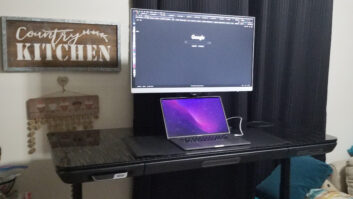New York — According to most sources, the end of analog broadcasting went relatively smoothly over the weekend.
The Federal Communications Commission (FCC) said Saturday it had received about 317,450 calls to its (888) CALL-FCC help line on June 12, the day that analog stations started going off the air.
Almost 700,000 calls came into the federal hotline during the week leading up to the cutoff event, the FCC said.
Following a media blitz, which intensified since the analog cutoff was delayed from the original Feb. 17 date last January, only about 2.5 percent of U.S. households, or 2.8 million homes, were unready for the transition deadline as of June 7.
FCC acting chairman Michael Copps said Saturday that work on the transition will not be over until all consumer problems are solved and broadcasters are making more of their new digital capacity available to public interest programming.
He said thousands of FCC staffers would continue to answer phones and help people whose TVs no longer work properly, at least until the end of this month.
The FCC and various help lines and walk-in centers around the country reported that the heaviest volume of issues on Friday concerned getting federal coupons to pay for digital converter boxes.
The FCC said the largest volume of calls on Friday came from the Chicago area, followed by Dallas-Fort Worth and New York.
One of the FCC’s biggest concerns was with channel 7 in Chicago (WLS-TV), which had trouble reaching some areas of its market because the digital channel was operating at relatively low power levels.
FCC commissioner Jonathan Adelstein said Saturday, “Things went about as smoothly as we could have hoped. It’s looking more like Y2K than the Bay of Pigs. Certainly, if we had not delayed and prepared, it might have been a disaster. But with the additional time, resources and actual planning, we put things in order just in time.”
Nevertheless, retailers fielded a last-minute rush for digital converter boxes. Mike Vitelli, executive VP of Best Buy’s consumer operating group, said the chain sold 175,000 set-top boxes the week of the transition, or seven times the prior rate. Geek Squad, which received grants from the FCC to provide consumers with free in-home set-up, also fielded a high number of inquiries in advance of the changeover, he told analysts during an earnings call.
North Carolina’s Elon University, which runs a consumer DTV help line for area residents, said of the 1,404 calls for assistance it received as of 8 p.m. June 12, “trying to get a DTV coupon” topped the list at 384.
“Not receiving a specific station in their market or have a weak signal” was second at 218.
“Not receiving any of the DTV signals after installing a converter box” was third at 192. “Difficulty setting up a converter box” was fourth at 121 and “antenna problems” was fifth at 84.
“Thought they were OK because they have cable, but they received the analog message” received 63 calls.
Elon said its student volunteers were able to resolve about 79 percent of the concerns.
“Calls have been steady but not overwhelming,” said Connie Book, associate dean of the School of Communications at Elon University, the professor heading up the call center. “We’re finding that some folks had their DTV converter boxes but never installed them. And some things just are not resolvable with the switch. We’ve had to tell a few folks they have a new CBS affiliate to watch, and others that the picture size is smaller when watching with a converter box.”
The National Association of Broadcasters (NAB) celebrated the successful transition Saturday, following a $1.2 billion community education effort that resulted in national awareness jumping from 38 percent in January 2007 to more than 98 percent in June.
Nine of 10 U.S. households knew the transition impacted over-the-air television signals. More than 60 million converter-box coupons were requested, and 30 million digital TV sets were sold in 2008 alone.
“America is the first large country in the world to complete the transition to all-digital broadcasting, and our early reports show that the transition has been a success,” said NAB VP for Digital Television Jonathan Collegio. “Television broadcasters, from local stations to major networks, took the lead in educating and prompting viewers to take advantage of the numerous benefits of free digital television. The broadcaster campaign elevated public awareness from 38 percent to over 98 percent in two short years.”













